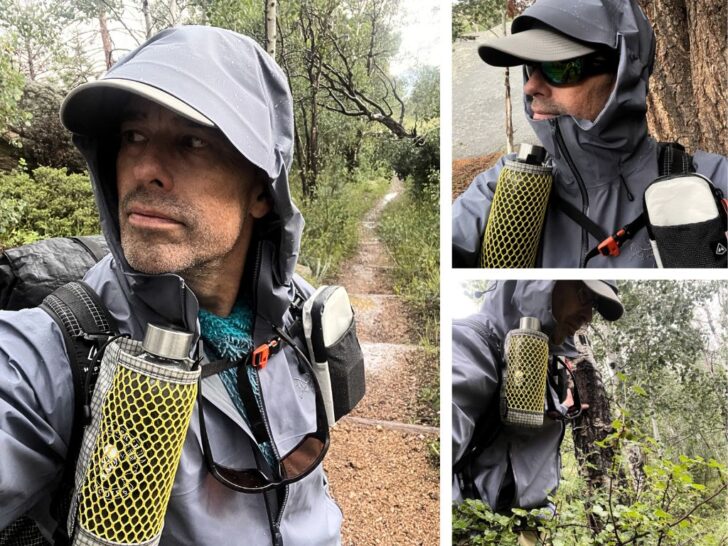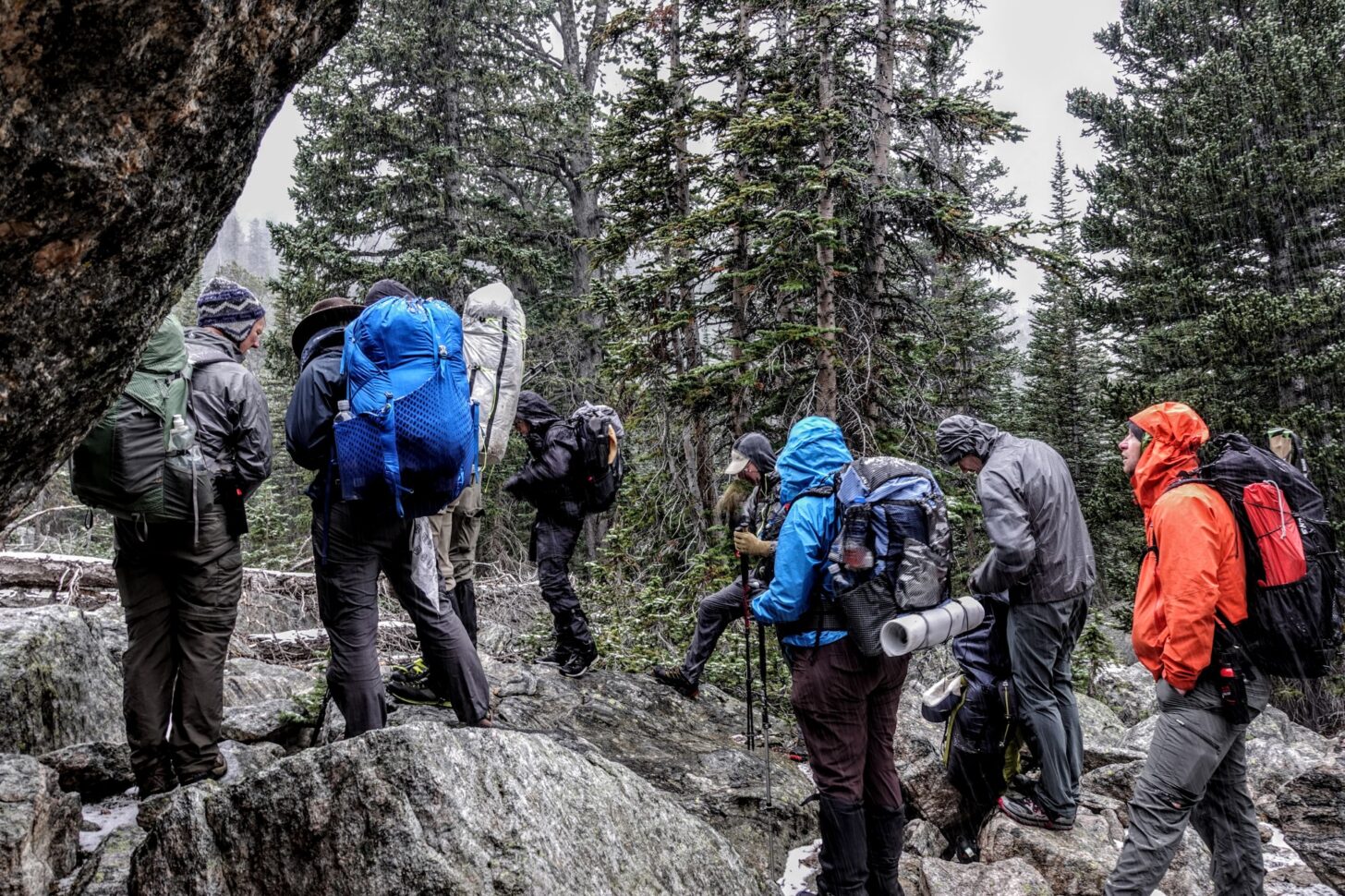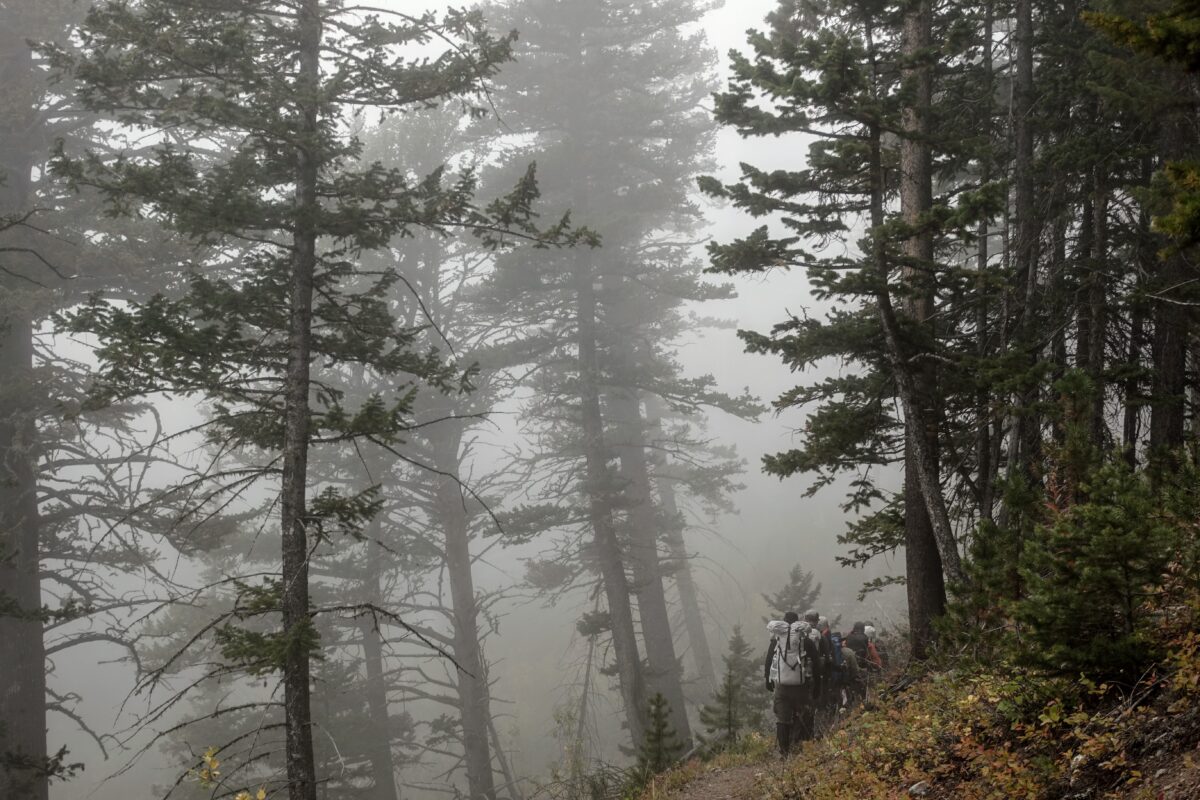Introduction
In this article, we make the case for spending a few extra ounces on raingear that offers more ventilation features and durability than typical ultralight rainwear styles.
We already know that raingear made with ultralight fabrics sacrifices durability and waterproofness when backpacking in heavy, sustained rain. However, ultralight raingear also makes other compromises, including simpler designs that sacrifice ventilation, limiting one’s ability to control thermoregulation when one’s exertion level is high.
Because weight, durability, and ventilation are often at odds with each other, we’ll discuss the use cases where spending a few extra ounces may be worth it.
Updated July 28, 2024: Edits made to clarify terminology around heat and moisture transfer processes; discussions reorganized and expanded to improve clarity, including addressing some forum comments prior to this update date; product recommendations updated to reflect current state of the market.

Why is layering important?
Layering various combinations of clothing pieces helps hikers manage thermal comfort and moisture in response to changes in activity level and environmental conditions.
Generally, layers for backpacking should be hydrophobic (so as not to absorb excessive moisture, whether from perspiration or precipitation), quick to dry, and lightweight.
Clothing that absorbs as little moisture as possible (i.e., is hydrophobic and lightweight) dries faster and remains lighter if you have to stow it back in your pack. In addition, the less moisture that is absorbed in your clothing, the less likely you will be chilled by evaporative cooling. Evaporation of moisture in clothing requires body heat. Excessive loss of body heat can be uncomfortable or unsafe in cold conditions.
Traditional layering systems for inclement weather are based on their ability to serve three primary functions:
- Wick perspiration away from the skin surface.
- Keep you warm via insulation and wind-blocking.
- Keep you dry and protected from precipitation.
Limitations of traditional three-layer systems
These three functions are addressed by what is commonly referred to as the three-layer system.

The layering system illustrated above includes three popular garments and weighs a total of 31.3 oz (887 g):
- Patagonia Capilene Midweight Crew (6.2 oz / 176 g)
- Patagonia R1 Fleece Pullover (11.2 oz / 332 g)
- Patagonia Torrentshell Rain Jacket (13.9 oz / 394 g)
In the three-layer model, the wicking layer is worn in warm conditions, the warmth layer is added in cold and dry conditions, and the wind/rain jacket is layered over either the wicking layer alone (e.g., in cool and drizzly or dry, cold, and windy conditions) or over both the wicking and warmth layer (e.g., in very cold, wet, and windy conditions).
Author’s Note: An ultralight backpacker will look at the specific three-layer system example above and be appalled at the weight! For example, my mid-summer alpine hiking layers in the central US Rocky Mountains often includes a 115 gsm (gram per square meter) merino base layer (4.1 ounces / 116 g), a 60 gsm Polartec Alpha Direct hoody (3.5 ounces / 99 g), and a 7D waterproof trail running smock (3.1 ounces / 88 g), for a total system weight of 10.7 ounces (303 g): a system that’s about a third of the weight of the one illustrated in the image above.
Why lighter layers matter
The purpose of layering is not to save weight; it’s to increase comfort and versatility in response to changing activity levels and environmental conditions. However, selecting the lightest possible layers to accomplish this objective makes obvious sense. Lighter layers (less material) absorb less water and dry faster. Lighter layers provide less material resistance in response to body movement and feel more comfortable. And, of course, when stowed in your pack while not in use, lighter layers are, well, lighter.
Layering challenges during shoulder seasons
Shoulder season refers to spring and fall when the weather is predominantly characterized by wet, cold, and windy conditions (as opposed to the dryer and warmer conditions of summer and the dryer and colder – subfreezing – conditions of winter). I find it easier to stay comfortable during the snowy subfreezing cold of winter than during the wet, cold, and windy conditions that occur between Labor Day and Thanksgiving or between Easter and Juneteenth (at least where I do most of my hiking in the Colorado, Wyoming, and Montana Rockies). In addition, backpacking during shoulder seasons brings fewer daylight hours and more time spent in camp, where it’s harder to stay warm while inactive.
The three-layer system presented above starts to break down in shoulder season conditions, especially when precipitation starts to fall.

When raingear matters the most: the wind-cold-rain trifecta
During the summer in the mountains of the Northern Rockies (MT, WY, and Northern CO), in the Pacific Northwest (WA and OR), and in the Inland Northwest (e.g., Idaho Sawtooths, Uintas), shoulder season conditions can occur any time of year on a regular basis. If you are hiking in any of these areas on extended trips where you can’t accurately forecast the weather, plan on preparing for shoulder season conditions.
Barring any unusual weather patterns, most of the other mountains of CA, UT, NV, AZ, and the entire Appalachian corridor are characterized by warmer temperatures where a typical three-layer system will suit most hikers just fine.
The risk of discomfort and even hypothermia goes up significantly when the combination of cold temperatures (in the 50s °F / 10s °C or lower), heavy or sustained precipitation, and even just light winds (greater than about 10 mph / 16 kph) are coming at you during the day when you are facing several hours of hiking. I bring this up because the combination of cold, wet, windy conditions is something every hiker should be sensitive to, regardless of their geographic location or date.

When hiking in the cold-wet-wind trifecta, one of the biggest issues hikers face is that of overheating while wearing a waterproof shell. Let’s address that issue now.
Member Exclusive
A Premium or Unlimited Membership* is required to view the rest of this article.
* A Basic Membership is required to view Member Q&A events




Home › Forums › Why You Should Spend a Few Ounces of Pack Weight on Rainwear Ventilation Features